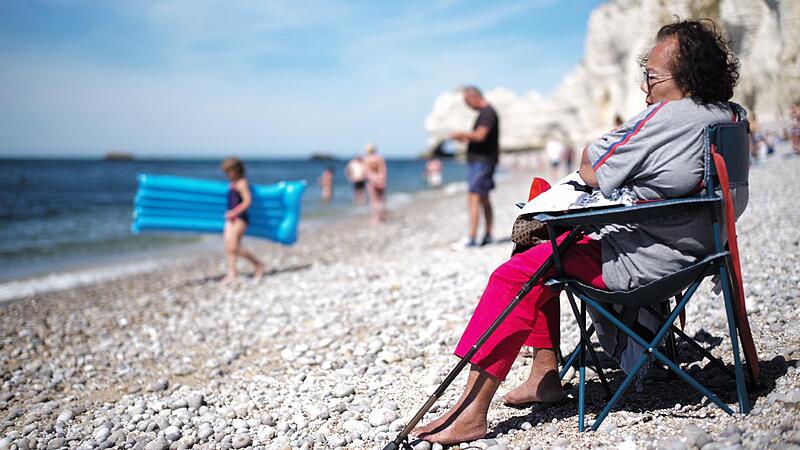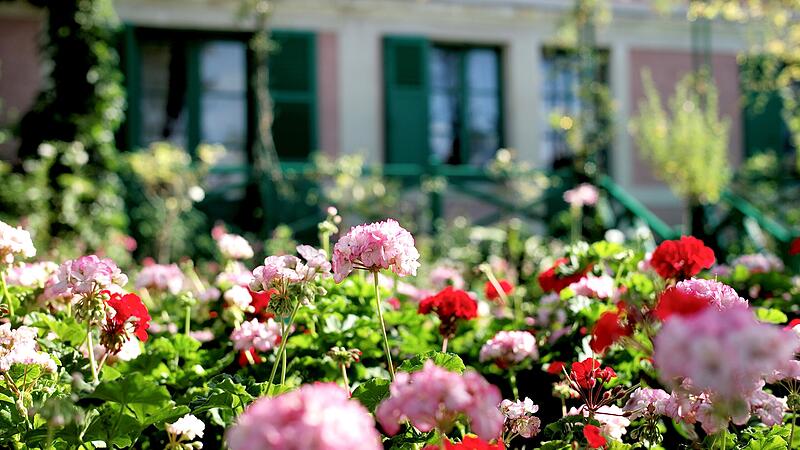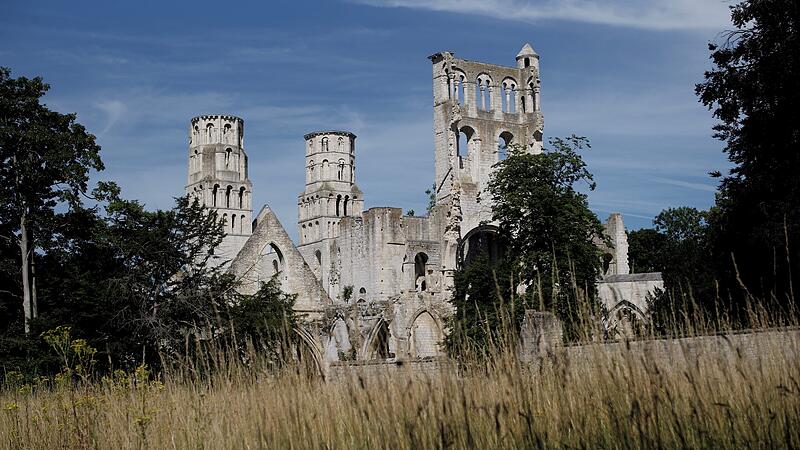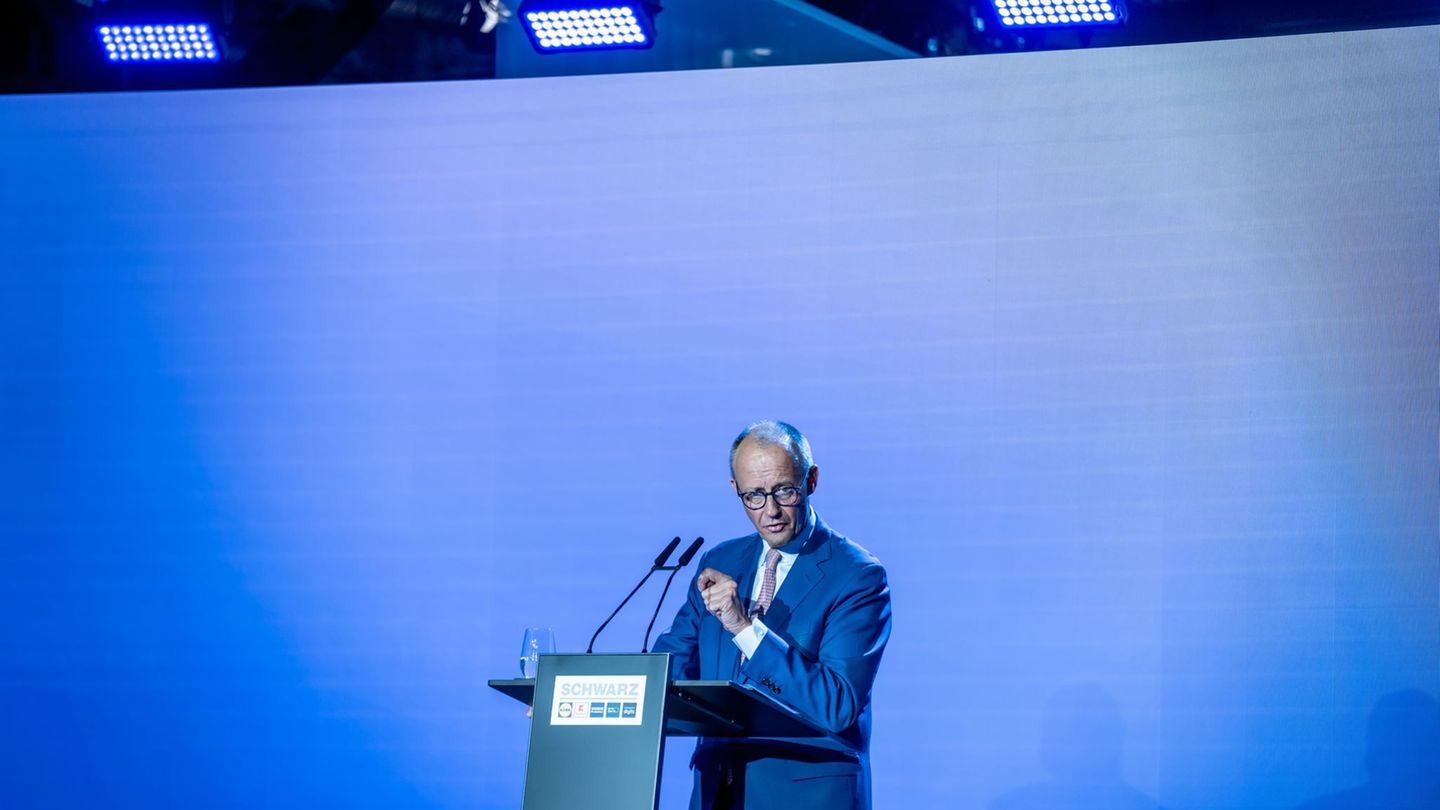It’s always good weather here, at least for a few minutes,” is a fixed weather rule in Normandy. The area around Rouen is considered France’s chamber pot because it’s said to rain the most there. The Atlantic drives the fronts in. But in July of the In the year 2022 even such certainties are waste. For weeks the sun has been beating down on the western backyard of Paris, the never-ending heat of midday stretches into the evening hours. Those who can flee into the shade or, as we do, seek the Wind on the front deck of the MS Seine Comtesse, whose two Caterpillar engines push the 180-meter-long ship and its 100 guests from Paris towards the sea, which the Seine approaches in wide loops.
After a two-year Corona break, the OÖN, together with Moser-Reisen, have again invited to a river cruise, it goes to the north-western tip of France, a corner of thinkers, poets, conquerors, painters, butter and fat pastures and last but not least squares a war story. Normandy is “the land behind the capital”, all of Paris went to the sea in the late 19th and early 20th centuries.
Deauville became the meeting point of the beautiful, Etretat with its pebble beach the destination for the commoners (the “bourgeoisie”), who had found a better life on the promise of the revolution and democracy. They were followed by the Impressionists, who painted the people as they were, not embellished, along with the landscapes flooded with light, the parade of gray stones, houses and cliffs lining the shore.
Claude Monet, the genius among these Impressionists, painted them all, alone 35 haystacks in all facets of light, backlight, frontal light, morning haze, grazing light. “I paint because I can’t help but paint,” Monet said. In 1874, the Impressionists ignited the modern age of painting, Monet’s paintings are now in museums around the world, and their price has increased fiftyfold in the last 30 years. Seeing Normandy through Monet’s eyes means having an eye for the deep sky and the smooth sea, the flax that lies in the fields and is turned every six days before it can be harvested after six weeks, when it has turned dark brown .
Monet’s world-famous garden, located on the right bank of the Seine in Giverny, is stormed by hundreds of thousands of tourists every year. We are the first on this day, the gate to the water garden opens at nine o’clock sharp. Inspired by Japanese reduction, Monet had ponds and canals laid out – here he captured hundreds of water lilies on canvas.
His house closes off the upper part of his garden – studio, bedroom, kitchen can be walked through – nothing has changed here in the last 80 years. In the cemetery, the Monet family lies in the second grave to the right of the church gate – the grave site for the seven-man crew of a British Lancaster bomber, which was shot down here in 1944, is reminiscent of the traces of the Second World War. A reminder of another historical setting: the coast south-east of Caen, where the Allies landed on June 6, 1944 in the fight against Hitler’s Germany.


Cider, Calvados, Camembert
In stark contrast to this, today it is again a cheerful, green land that we, the ship’s passengers, are gliding past while resting on the upper deck. World literature is located here. Gustave Flaubert, author of Madame Bovary, was born in Rouen, the capital of Normandy, Guy de Maupassant (“Bel-Ami”) lived and died in Etretat. As a “deckchair hermit” on board, you can dwell on these great texts and let the present sink in. The Norman cows crowd into view, black and white dappled, with circular splashes of color around the eyes, “sunglasses” says our guide Melanie.
Agriculture is the basis for the three big Cs of Normandy: Calvados, cider (comparable to our must) and Camembert de Normandie. “Fats, butter and cream make us big and strong,” it says here. Fatty essences envelop beef, fish and seafood.
But all roads lead to the apple here, which is pressed into cider and later distilled into Calvados. And don’t forget the oyster. In the picturesque Honfleur, south of Le Havre at the mouth of the Seine, we have a good time in the “Poissonnerie”, order 12 oysters, snails, mussels each, along with a Chablis and, by eating the oysters with lemon juice, violate the classic school. This says: no ingredients, chew for a long time, so the aromas of salt, iodine, wood, mushrooms, leather, and whatever else connoisseurs think they can develop best. The freshness of these oysters is unbeatable. There are few delicacies where the gap between kill and consumption is as small as that of the oyster.
Anyway, Honfleur and Etretat, they are our darlings on this river trip. We stick our legs into the Atlantic on the beach at Le Havre and, having become brave, we dive completely under. The water is more than 20 degrees. We marvel at the hustle and bustle in Etretat, the most beautiful place on the Alabaster Coast. South of the Seine begins the flower coast with the fashionable Deauville and behind it the landing beaches with the sections Utah, Gold, Omaha and Sword – definitely worth a visit and can only be recommended to every Normandy vacationer.
The largest city in Normandy is Le Havre – it is the Stalingrad of the French. It was bombed 132 times during the Second World War, and the architect Auguste Perret built a modern model city from the rubble – with clear lines, straight surfaces and smooth concrete over and over again. Perret is the “master of concrete”, but his sterile architecture is an inappropriate response to the heat of cities in times of accelerated climate change. The July sun turns Le Havre into a baking oven; Perret has developed no liking for trees, avenues, or even urban greenery. So climate change makes him fly out of time.
Norman fixed points are the chalk cliffs of this landscape, they have been the basis for the architecture. Westminster Abbey or the Tower of London are built of limestone from Caen and Vernon, the Normans brought this gray to England with William the Conqueror, it is not the other way around as many think.
Normandy has always been the scene of historical turning points. In the Hundred Years’ War, Joanna saved the city of Orleans from being taken over by the British. As Joan of Arc, she was handed over to the English in Rouen and burned by the church. On the Place du Vieux Marche, the Sainte-Jeanne church, built in 1979, is reminiscent of her, here too cool concrete architecture and a homage to seafaring. The floor plan is based on a ship’s hull.


2023 on Saone and Rhone
Another church worth seeing, Rouen Cathedral, is a prime example of Norman Gothic architecture. The Vikings advanced from Rouen upstream of the Seine, and to this day it has not been finally clarified whether the Norsemen were Danes or Norwegians. They allowed themselves to be Christianized and built with stone. Anyone who is self-reliant today beautifies their house with material from the chalk cliffs. You don’t have to proceed as brutally as was the case after the revolution. The beautiful Benedictine abbey of Jumieges served as a quarry for the surrounding area. Only the skeletons remain of her – that is why the harmony of nature and architecture seems so successful here, the visitors wander to the sounds of the spheres among these witnesses of a 1000-year history.
At the end of this river cruise, the Comtesse will anchor in Paris for two days. We couldn’t have caught it better on the eve of July 14th and the French national holiday. We experience the two fireworks on deck foot-free in the first row, in front of us in the glass that Sauvignon that won the OÖN wine show on board the day before. On the 14th we mingle with the hundreds of thousands of visitors to the military parade, national pride is palpable.
For 2023, Fritz and Maria Moser have already identified the next area of the OÖN river cruise. It will go to France again, from Burgundy to Provence, down the Saone and the Rhone. You can get details from Moser-Reisen in Linz.
Everything Sauvignon
The fixed point of every OÖN river cruise is the wine show organized by sommelier Hans Stoll. On the Seine, Stoll had Sauvignon Blancs from Austria, France and the New World compete against each other. Audience rating and expert judgment diverged. The winner of the expert jury was the Styrian Sauvignon Ried Sulz from the Tement winery, followed by Ventisquero Chile (Sauvignon Riserva Casablanca) and another Styrian: old vines from Alois Gross from Ratsch.
The declared favorite of the OÖN readers on board the MS Seine Comtesse was the New Zealand Nautilus Marlborough, followed by Henri Bourgeois (Val de Loire) and Erwin Sabathi (Sauvignon Blanc vom Opok, southern Styria).
Source: Nachrichten




